While most land animals would face severe dehydration and kidney failure from drinking seawater, certain remarkable species have evolved specialized adaptations that allow them to consume and process salt water without harm. These evolutionary marvels have developed unique physiological mechanisms to extract the water they need while eliminating excess salt. From marine birds with specialized glands to desert-dwelling mammals and reptiles, these animals showcase nature’s ingenious solutions to survival in challenging environments where freshwater is scarce. Let’s explore 12 fascinating animals that can drink seawater and thrive, demonstrating the extraordinary adaptations that allow them to utilize this abundant but typically toxic water source.
Albatrosses – Masters of Salt Excretion

Albatrosses spend months or even years at sea without ever returning to land, making them true marine marathoners. These remarkable seabirds have evolved specialized salt glands located above their eye sockets that filter salt from their bloodstream after consuming seawater. The concentrated salt solution is then expelled through their nostrils, often appearing as white streaks that run down their beaks. This adaptation is so efficient that an albatross can drink seawater with higher salt content than their blood and still maintain proper hydration. Their salt glands can produce a solution that’s twice as salty as seawater itself, allowing them to effectively remove excess salt while retaining the water they need. This remarkable adaptation enables albatrosses to survive their incredibly long journeys across vast oceans, where they may not encounter freshwater for years at a time.
Penguins – Cold-Weather Salt Processors

Despite their comical waddling on land, penguins are superbly adapted marine creatures with remarkable salt-processing abilities. Like other seabirds, penguins possess specialized supraorbital salt glands that filter salt from their bloodstream. When penguins consume seawater while hunting for fish, these glands extract the excess salt, creating a concentrated solution that is expelled through small openings near their eyes. You might notice penguins appearing to “sneeze” frequently—this is actually their method of expelling excess salt. Emperor penguins, in particular, have highly efficient salt glands that allow them to survive in the harsh Antarctic environment where freshwater is typically frozen and inaccessible. Their bodies can process seawater so efficiently that the salt concentration in their expelled fluid can be up to five times higher than that of seawater itself, showcasing their remarkable physiological adaptation to marine life.
Sea Turtles – Ancient Salt Regulators

Sea turtles have navigated Earth’s oceans for over 100 million years, developing specialized salt glands to help them survive their marine lifestyle. Located near their eyes, these modified tear glands serve a vital function: removing excess salt from their bodies. When sea turtles consume seawater or eat marine prey with high salt content, these glands filter the salt from their bloodstream. The resulting concentrated salt solution is expelled through ducts near their eyes, often giving the appearance that sea turtles are “crying.” This remarkable adaptation allows sea turtles to maintain proper salt balance despite living in a saltwater environment. Leatherback sea turtles, the largest of all sea turtles, have particularly well-developed salt glands that enable them to process large quantities of seawater while maintaining essential hydration during their long oceanic migrations. These ancient reptiles demonstrate how specialized adaptations can evolve to solve the fundamental challenges of marine existence.
Marine Iguanas – Sneezing Salt
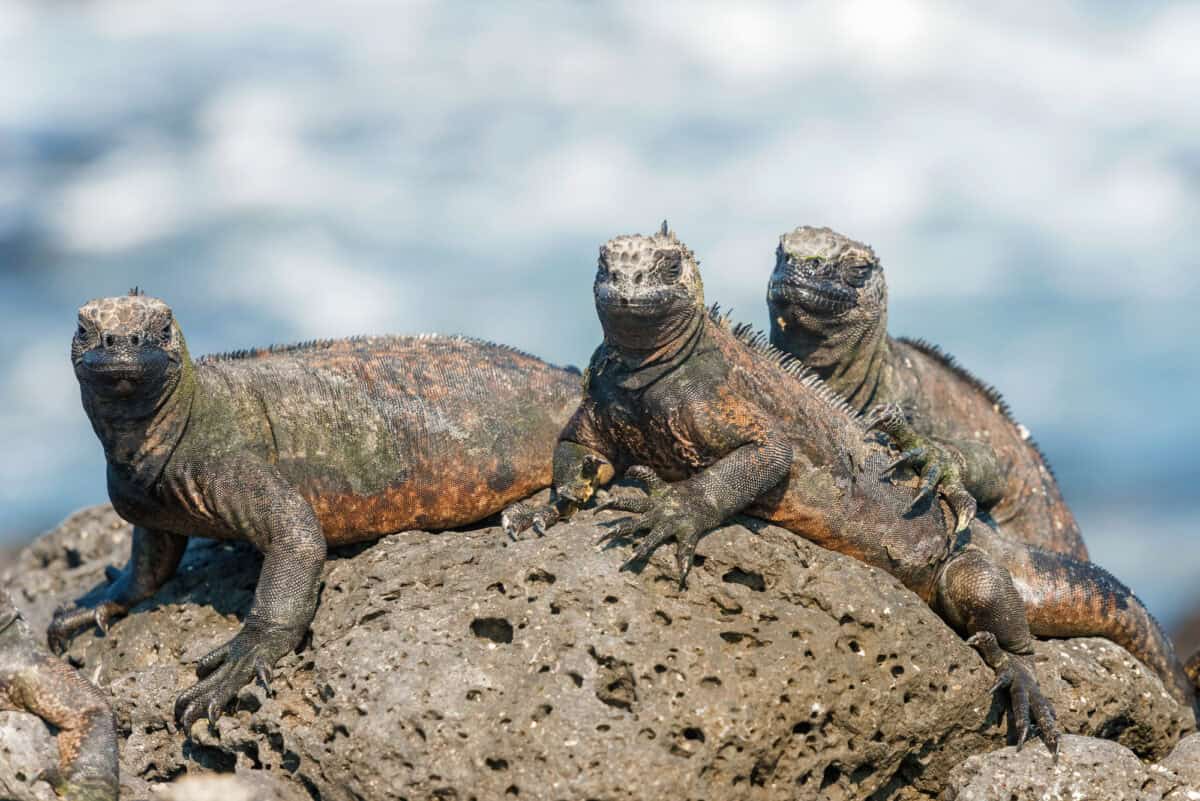
Found only in the Galápagos Islands, marine iguanas are the world’s only sea-going lizards, and they’ve evolved a fascinating method for dealing with salt intake. When feeding underwater on algae, these unique reptiles inevitably consume significant amounts of seawater. To manage their salt balance, marine iguanas have developed specialized nasal glands that filter excess salt from their bloodstream. The concentrated salt solution is then forcefully expelled through their nostrils in a process that resembles sneezing, often creating visible salt clouds around their heads. Charles Darwin famously described this behavior as “snorting salt.” These impressive adaptations allow marine iguanas to spend hours foraging in the sea before returning to land to bask in the sun and process their salt intake. Their salt-expelling mechanism is so efficient that the crystallized salt often forms visible white deposits on their heads, creating a distinctive “salt wig” appearance that serves as evidence of their remarkable salt-processing capabilities.
Saltwater Crocodiles – Lingual Salt Excretion
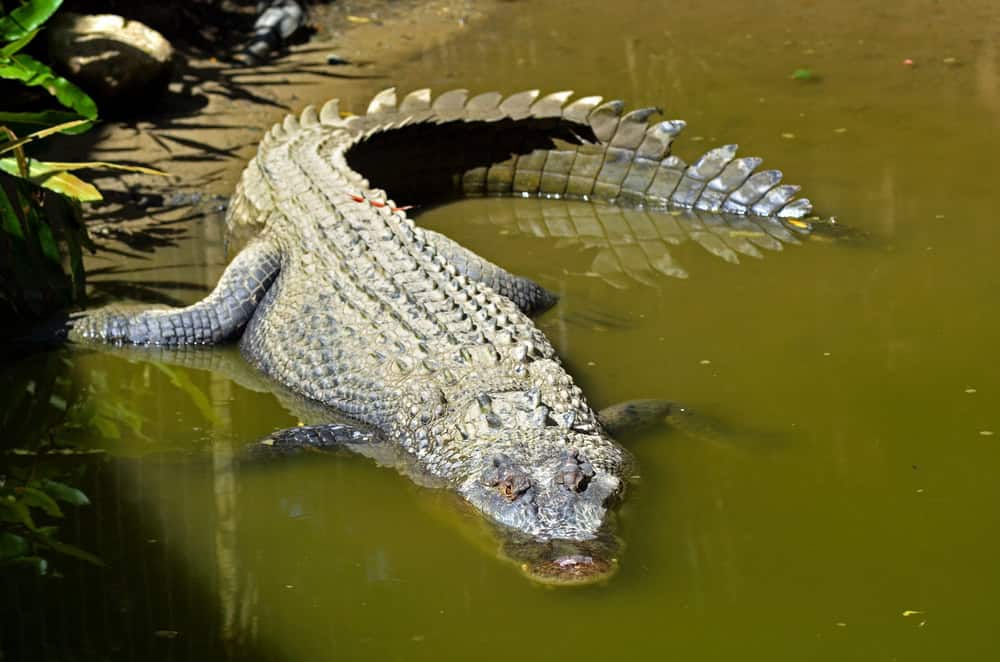
As their name suggests, saltwater crocodiles are well-adapted to life in marine environments, though they also inhabit freshwater areas. Unlike the previous animals mentioned, these formidable reptiles don’t possess specialized salt glands near their eyes or nasal passages. Instead, saltwater crocodiles have unique lingual salt glands located on their tongues. These specialized glands excrete excess salt directly from the tongue surface, allowing these crocodiles to maintain proper osmotic balance despite living in saltwater habitats. This adaptation enables saltwater crocodiles to be incredibly versatile, thriving in marine environments from Australia’s northern coast to the islands of Southeast Asia. Their ability to process seawater contributes to their status as one of the most widely distributed crocodilian species. Additionally, saltwater crocodiles can obtain significant hydration from their prey, reducing their need to drink large quantities of water and further helping them adapt to life in saltwater environments where freshwater may be limited.
Manatees – Kidney Specialists
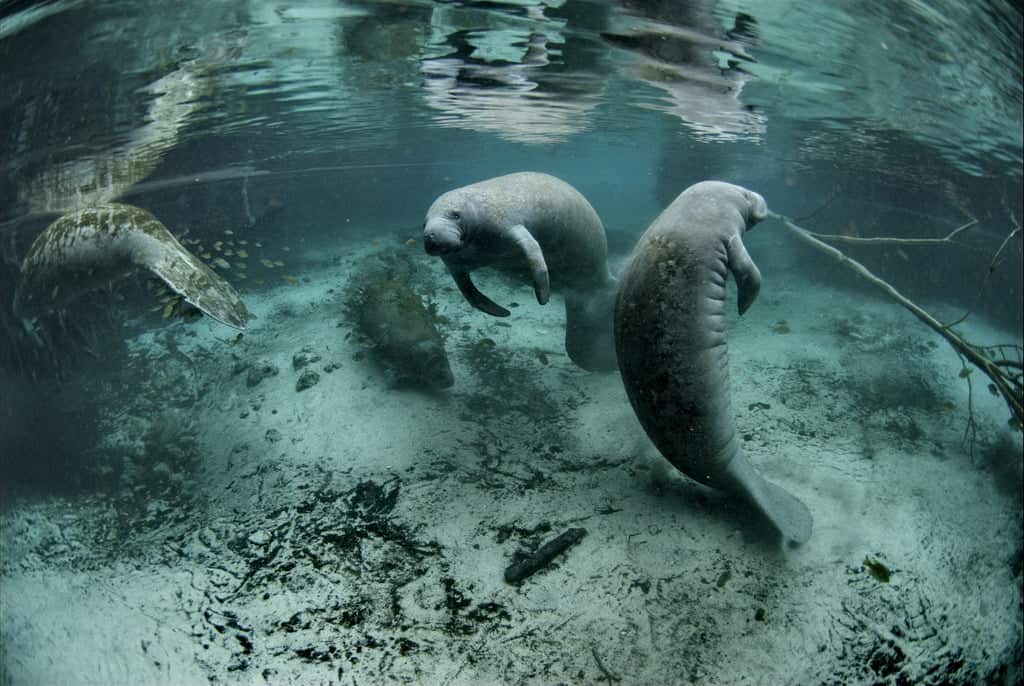
Unlike many marine mammals that rely primarily on specialized glands to manage salt, manatees possess extraordinarily efficient kidneys that allow them to process seawater. These gentle “sea cows” have kidneys with uniquely structured renal tubules that can produce highly concentrated urine, effectively filtering out excess salt while conserving water. This adaptation is particularly impressive because manatees don’t have the salt glands common in other marine animals. Their specialized kidneys can concentrate salt to levels far exceeding what human kidneys could tolerate, allowing manatees to maintain proper hydration even when living in brackish or saltwater environments. While manatees do prefer freshwater when available and will actively seek out freshwater springs, their physiological adaptations enable them to thrive in varying salinity levels. This flexibility is one reason manatees can be found in diverse habitats ranging from freshwater rivers to coastal marine environments, showcasing the different evolutionary pathways that can solve the challenge of marine living.
Seagulls – Adaptable Salt Processors
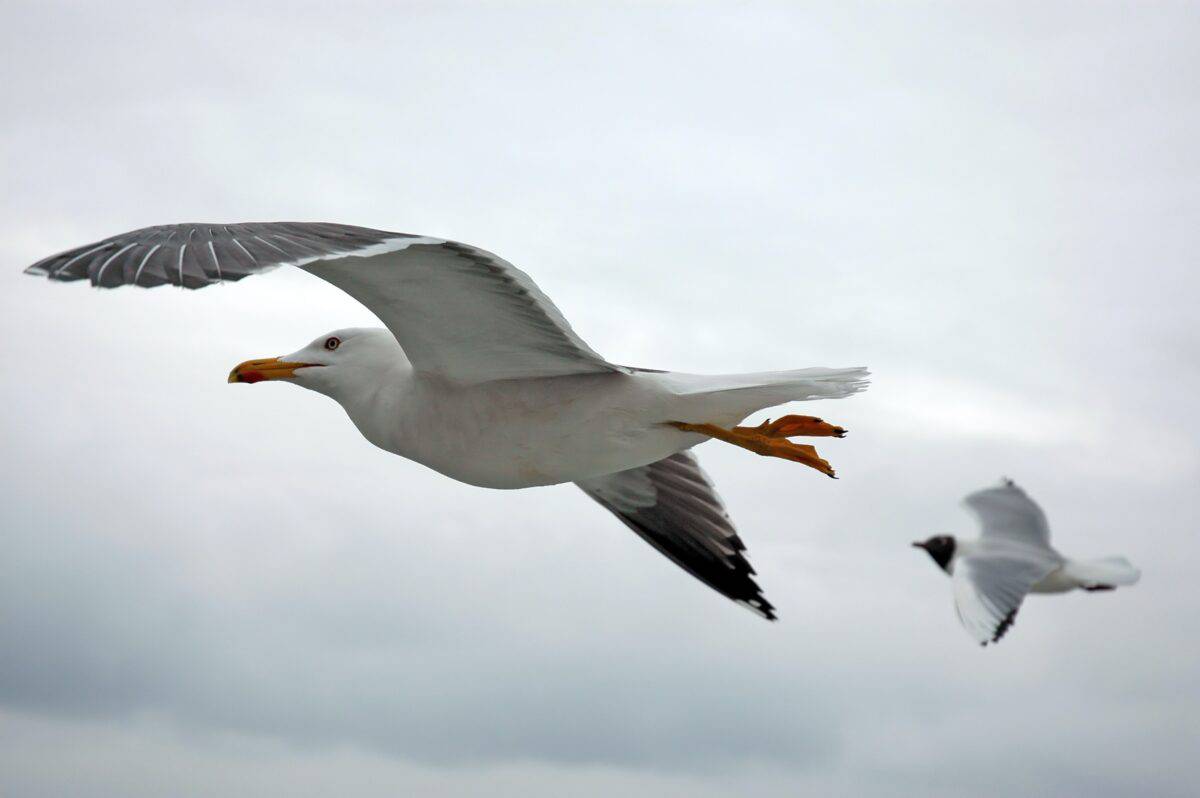
Seagulls are among the most adaptable birds on the planet, and their ability to process seawater plays a key role in their widespread success. Like other seabirds, gulls possess specialized supraorbital salt glands located above their eye sockets that filter excess salt from their bloodstream after consuming seawater. These glands produce a highly concentrated salt solution that is expelled through the nostrils, often visible as droplets on the tips of their beaks. What makes seagulls particularly remarkable is the adaptability of their salt glands—the size and efficiency of these glands can actually change depending on environmental conditions. When gulls spend more time in marine environments and consume more saltwater, their salt glands enlarge and become more efficient. Conversely, when freshwater is readily available, the glands may decrease in size. This physiological flexibility allows seagulls to thrive in diverse habitats from coastal areas to inland locations, contributing to their status as one of the most successful and widespread bird groups in the world.
Brant Geese – Seasonal Salt Adapters
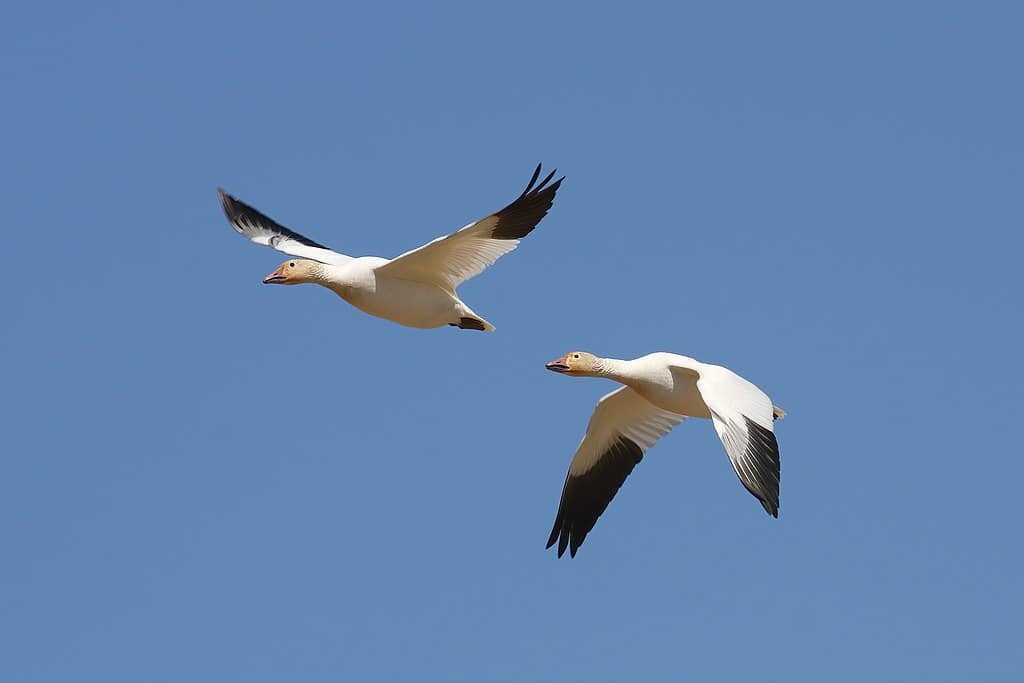
Brant geese demonstrate one of the most remarkable seasonal adaptations to salt processing in the avian world. These coastal birds undergo significant physiological changes as they migrate between their freshwater breeding grounds and saltwater wintering areas. When Brant geese transition to marine environments where they feed primarily on saltwater plants like eelgrass, their salt glands dramatically increase in size and efficiency—growing up to 40% larger in just a few days. This rapid physiological response allows them to quickly adapt to a diet and environment with much higher salt content. Their salt glands become capable of producing a solution with salt concentrations up to twice that of seawater, efficiently removing excess salt from their systems. When the geese return to freshwater environments, the salt glands shrink back to their smaller size, conserving energy when this specialized adaptation isn’t needed. This remarkable seasonal plasticity highlights the dynamic nature of evolutionary adaptations and how some species can actively remodel their physiology to meet changing environmental challenges.
Kangaroo Rats – Desert Moisture Masters
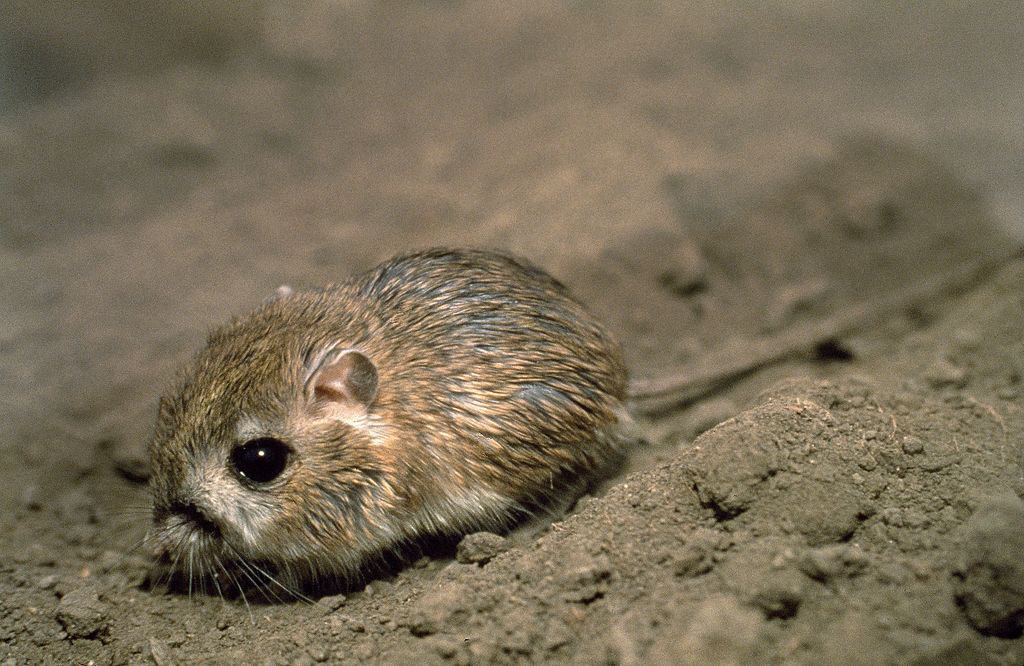
Kangaroo rats stand out on this list as they aren’t marine animals, but their exceptional water conservation abilities allow them to process water with high salt content that would be toxic to most mammals. These remarkable desert dwellers have evolved specialized kidneys with uniquely elongated loops of Henle, the structures responsible for water reabsorption. This adaptation enables them to produce extremely concentrated urine, effectively eliminating excess salt while retaining precious water. Kangaroo rats can produce urine that’s up to five times more concentrated than human urine, allowing them to survive in arid environments where the only available water may have high mineral content. Their efficient kidneys are so effective that kangaroo rats can actually survive without ever drinking free-standing water at all, obtaining all their hydration from the metabolic water produced by digesting dry seeds and from occasional consumption of succulent plants. When they do encounter water with high salt content, their specialized kidneys can process it without harm, demonstrating how desert adaptations can sometimes parallel the challenges faced by marine animals.
Sea Snakes – Sublingual Salt Glands

Sea snakes have evolved to become fully marine reptiles, rarely if ever returning to land, and their salt-processing adaptations play a crucial role in this lifestyle. Unlike the nasal or orbital salt glands found in many marine animals, sea snakes possess specialized sublingual salt glands located beneath their tongues. These glands filter excess salt from their bloodstream and secrete a concentrated salt solution into their mouth, which is then expelled when the snake surfaces to breathe. This adaptation is remarkably efficient—sea snakes can remove salt at concentrations up to 20 times higher than that of seawater. The yellow-bellied sea snake, which spends its entire life in the open ocean and never visits land, has particularly well-developed salt glands that enable it to maintain proper osmotic balance despite its fully marine existence. Additionally, sea snakes have evolved relatively impermeable skin that limits passive salt uptake from the surrounding seawater, further helping them manage their salt balance in their challenging marine environment.
Dolphins – Specialized Kidney Function

Dolphins and other cetaceans face the constant challenge of living in a saltwater environment, and they’ve evolved specialized physiological adaptations to address this challenge without relying on salt glands. Unlike many other marine animals, dolphins process salt primarily through their highly specialized kidneys, which have multiple reniculi—essentially, numerous mini-kidneys functioning in parallel. This unique kidney structure allows for more efficient filtration and the production of highly concentrated urine that removes excess salt while conserving water. Dolphins obtain most of their water from their food, as the fish and squid they consume contain significant amounts of freshwater. When they metabolize these foods, dolphins produce “metabolic water” as a byproduct, providing an additional internal water source. Their specialized kidneys then efficiently manage salt balance by concentrating and excreting excess salt. Additionally, dolphins have adapted to minimize water loss through respiration and specialized skin that prevents salt absorption, creating a comprehensive suite of adaptations that allow them to thrive in their marine environment without dedicated salt glands.
Frigate Birds – Aerial Mariners
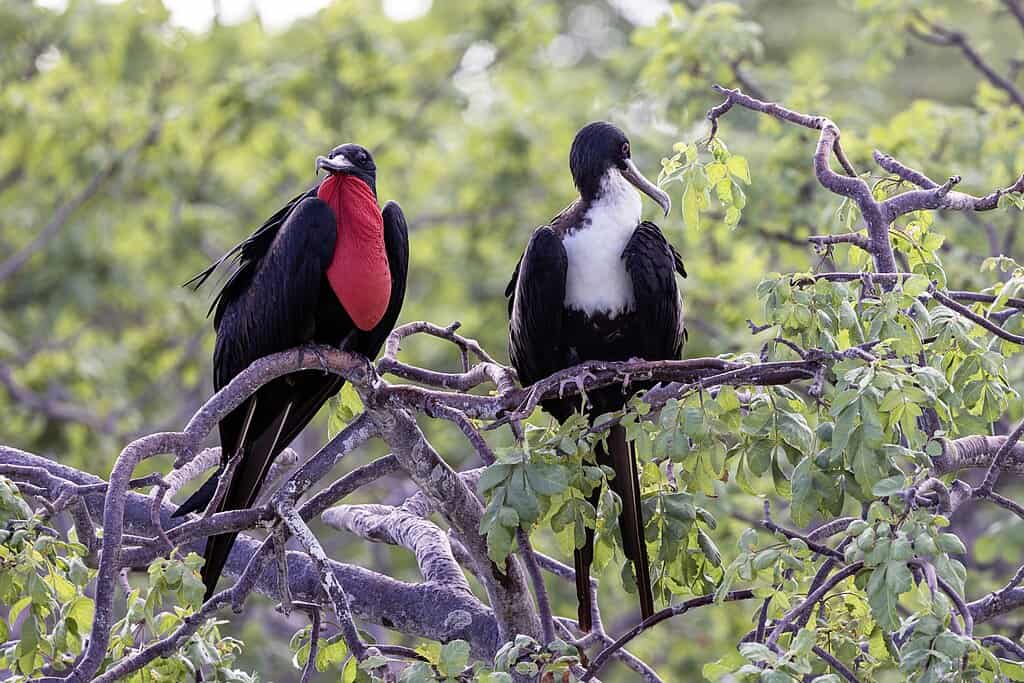
Frigate birds represent perhaps the most extreme adaptation to marine life among flying birds, capable of staying aloft for months at a time without landing on water or land. Despite spending their lives above the ocean, frigate birds must occasionally consume seawater, especially during their remarkable marathon flights that can last up to two months of continuous flying. Like other seabirds, they possess specialized salt glands located in supraorbital depressions above their eye sockets. These highly efficient glands filter salt from the bloodstream and excrete it as a concentrated solution through the nostrils. What makes frigate birds particularly remarkable is the size and efficiency of their salt glands relative to their body weight—among the largest in the avian world. Their salt glands can produce a solution with salt concentrations up to 2.5 times higher than their blood, allowing for incredibly efficient salt elimination. This adaptation, combined with their ability to catch flying fish and feed on the wing, enables frigate birds to maintain their aerial lifestyle for astounding durations, showcasing one of nature’s most impressive adaptations to marine existence without actually living in the water.
Conclusion: The Evolutionary Marvel of Salt Tolerance

The diverse adaptations that allow these 12 animals to consume seawater represent a fascinating study in convergent evolution—different species independently developing similar solutions to the common challenge of salt regulation. From the specialized salt glands of seabirds and marine reptiles to the highly efficient kidneys of manatees and dolphins, these adaptations showcase nature’s remarkable ability to solve complex physiological problems. These mechanisms not only allow these animals to survive in marine environments but have enabled them to thrive and exploit ecological niches unavailable to species without such adaptations. As climate change continues to affect freshwater availability worldwide, understanding how these animals process salt becomes increasingly relevant to conservation efforts and potentially to human technology development. The study of these natural salt-processing systems may even inspire biomimetic solutions to human water purification challenges, demonstrating once again how the natural world serves as both a living laboratory and a source of inspiration for addressing our own environmental challenges.
- 12 Animals That Can Drink Seawater and Survive - August 11, 2025
- 12 Aquatic Creatures That Breathe Air - August 11, 2025
- Watch a Chimpanzee throw a Water Bottle at Zoo Visitor - August 11, 2025

